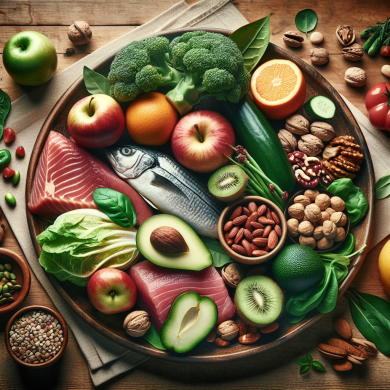Top Paleo-Approved Oils and Fats Revealed
Introduction to Paleo Diet
The Paleo diet, also known as the Paleolithic or “caveman” diet, has gained popularity for its focus on consuming foods that our hunter-gatherer ancestors might have eaten. The core principle of this diet is to promote natural, unprocessed foods that are believed to support optimal health and well-being. Among these foods, oils and fats play a crucial role in providing energy, supporting cell growth, and facilitating nutrient absorption. This article explores the top Paleo-approved oils and fats, delving into their benefits and culinary applications.
Understanding Paleo-Approved Oils and Fats
The Paleo diet emphasizes the consumption of healthy fats that are naturally occurring and minimally processed. These fats are typically rich in monounsaturated and saturated fats while being low in polyunsaturated fats. The following sections reveal the top Paleo-approved oils and fats, highlighting their nutritional profiles and uses.
Coconut Oil: The Versatile Superfood
Coconut oil is a staple in the Paleo diet due to its high saturated fat content and health benefits. It is composed primarily of medium-chain triglycerides (MCTs), which are easily digested and quickly converted into energy by the body. Coconut oil supports metabolic health, aids weight management, and has antimicrobial properties.
Culinary Uses
Coconut oil’s stable nature makes it suitable for cooking at high temperatures, such as frying and baking. It imparts a subtle coconut flavor, enhancing both sweet and savory dishes.
Olive Oil: A Heart-Healthy Choice
Olive oil, particularly extra virgin olive oil, is celebrated for its monounsaturated fat content and rich antioxidant profile. It plays a significant role in promoting heart health, reducing inflammation, and supporting overall well-being.
Culinary Uses
Extra virgin olive oil is best used in raw applications, such as salad dressings and drizzling over cooked foods, to preserve its delicate flavor and nutritional properties. Light olive oil can be used for cooking at moderate temperatures.
Avocado Oil: The Nutrient-Packed All-Rounder
Avocado oil is another excellent choice for Paleo enthusiasts due to its high monounsaturated fat content and nutrient density. It is rich in vitamins E and K and provides a host of antioxidants that support skin health and combat oxidative stress.
Culinary Uses
Avocado oil boasts a high smoke point, making it ideal for frying, sautéing, and grilling. Its mild flavor allows it to blend seamlessly into a variety of dishes, from dressings to marinades.
Animal Fats: Traditional and Nourishing
Rendered animal fats, such as lard, tallow, and duck fat, are traditional fats used by our ancestors. These fats are rich in saturated fats and fat-soluble vitamins, offering energy and essential nutrients.
Culinary Uses
Animal fats add depth of flavor to roasted vegetables, meats, and savory pastries. Their high smoke point makes them suitable for frying and roasting.
Ghee: The Clarified Butter
Ghee, a form of clarified butter, is prized in the Paleo diet for its rich taste and nutritional benefits. It is free from lactose and casein, making it suitable for those with dairy sensitivities. Ghee is a source of butyrate, a fatty acid that supports gut health and reduces inflammation.
Culinary Uses
With its high smoke point and nutty flavor, ghee is perfect for high-heat cooking, sautéing, and flavoring curries and stews.
Macadamia Nut Oil: A Delicate Flavor
Macadamia nut oil is valued for its high monounsaturated fat content and delicate, buttery flavor. It contains omega-3 fatty acids and antioxidants that contribute to heart health and overall wellness.
Culinary Uses
Ideal for dressings and low-heat cooking, macadamia nut oil adds a unique flavor to salads, fish, and roasted vegetables.
Sourcing and Considerations
When selecting oils and fats for a Paleo diet, quality is paramount. Opt for organic, cold-pressed, or minimally processed options to ensure the preservation of nutrients and flavors. Be mindful of the sourcing and production methods to align with the Paleo philosophy of consuming whole, unprocessed foods.
Conclusion: Balancing Fats for Optimal Health
Incorporating a variety of Paleo-approved oils and fats into your diet can promote optimal health and enhance culinary experiences. By understanding the unique properties and benefits of each oil and fat, individuals can make informed choices that align with their health goals and dietary preferences. Remember, moderation and balance are key, and it’s important to listen to your body’s needs while adhering to the principles of the Paleo diet.















Add comment